Caprolactam Petrochemicals PlasticPollution 06-07-2021 - Arhive
Caprolactam Petrochemicals PlasticPollution
Crude Oil Prices Trend
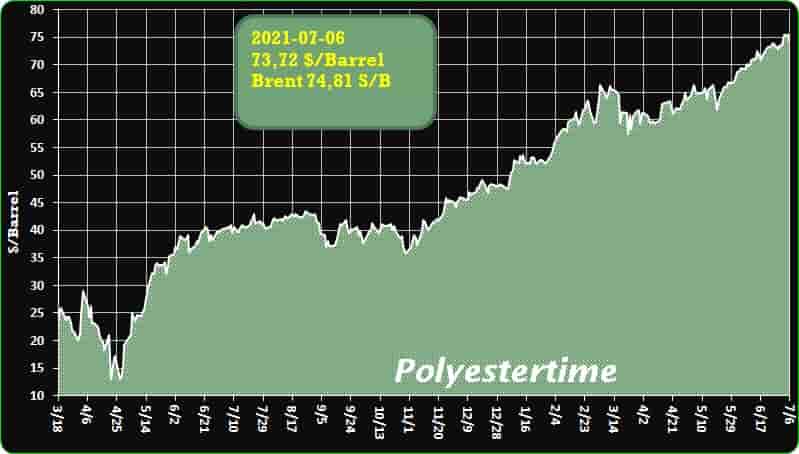
-July contract price of styrene fell in Europe by EUR208 per tonne
The contract price of styrene monomer in Europe has been finalized for July deliveries at EUR1,341 per tonne, down EUR208 per tonne from the previous month, ICIS reported.
The contract price was negotiated free on board (FOB) Amsterdam-Rotterdam-Antwerp (ARA).
Thus, in the European market, agreement was reached on the July contract price for the material by three buyers and two sellers, which is a sufficient configuration for the approval of the contract price for the material.
The decrease in the contract price of styrene compared to June was caused by lower quotations of raw materials – benzene – over the last month and further stabilization of the supply of the material on the market, including due to imports, after prices reached a historical maximum in May.
Consumer interest has also declined in recent weeks ahead of the summer break in Europe.
Earlier it was noted that the June contract price of styrene on the European market fell by EUR401 per tonne or 21% compared to May – to EUR1,549 per tonne, FOB ARA.
Styrene is the main raw material for the production of polystyrene (PS).
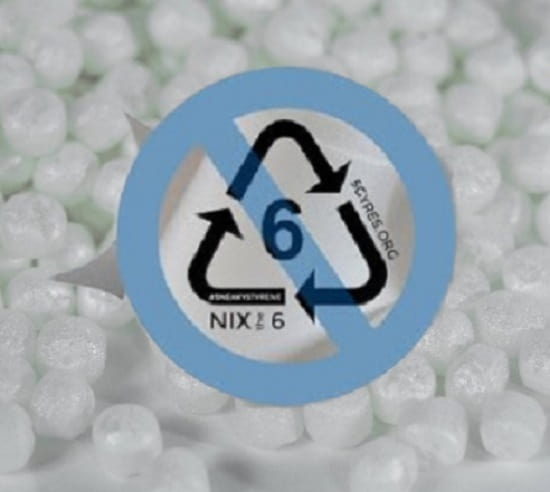
-Shell starts operations at Europe’s biggest green hydrogen PEM
-Shell has started operations at Europe’s largest green hydrogen electrolyser at its energy and chemicals park in Rheinland, Germany, the company announced on Friday. Caprolactam Petrochemicals PlasticPollution
The Refhyne project polymer electrolyte membrane (PEM) electrolyser will use renewable electricity to produce up to 1,300 tonnes/year of green hydrogen.
Initially, the hydrogen will be used to produce fuels with lower carbon intensity, and will be used to help decarbonise other industries.
This is the first fully operational plant to use the technology at this scale in a refinery, as part of the Refhyne European consortium and with funding from the European Commission’s Fuel Cells and Hydrogen Joint Undertaking (FCH JU).
The European consortium backing the project includes Shell, British PEM electrolyser producer ITM Power, research organisation Norway-headquartered research group SINTEF and consultants Sphera and Element Energy.
The electrolyser was made by ITM Power in Sheffield, UK and includes parts made in Italy, Sweden, Spain and Germany.
PEM electrolysers are more compact than conventional alkaline electrolysers and are suited to working with renewable energy because they can use varying loads of electricity, allowing them to operate when wind and solar energy generation are cheapest.
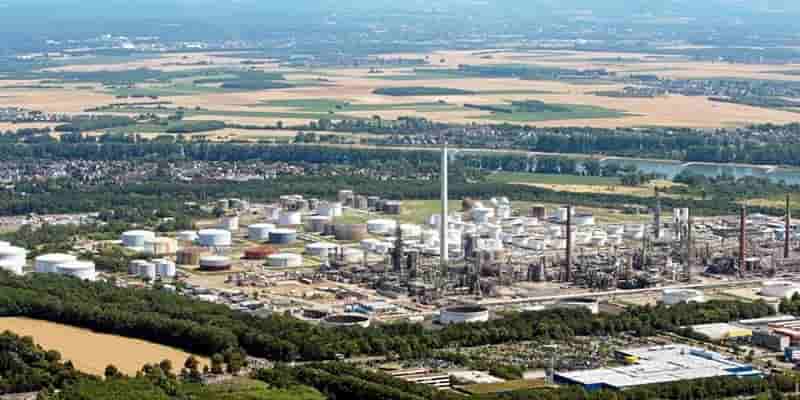
-Avient acquires UK-based Magna Colours
Avient, formerly PolyOne, expands its sustainable solutions portfolio with the acquisition of Magna Colours, according to Seeking Alpha.
Founded in 1978 and based in Barnsley, U.K., Magna is a developer of next-gen water-based ink technology that provides innovative and high-performance solutions.
The MagnaColours materials will join Avient’s existing specialty inks portfolio, besides prominent brands such as Wilflex and Rutland. Caprolactam Petrochemicals PlasticPollution
“Magna represents an important investment in sustainable solutions, as brand owners seek alternatives to legacy technologies,” said Robert M. Patterson, Chairman, President and CEO, Avient Corporation.
Avient expects its inks portfolio to grow as the coronavirus crisis is becoming less of a threat to economic and social activities, it added.
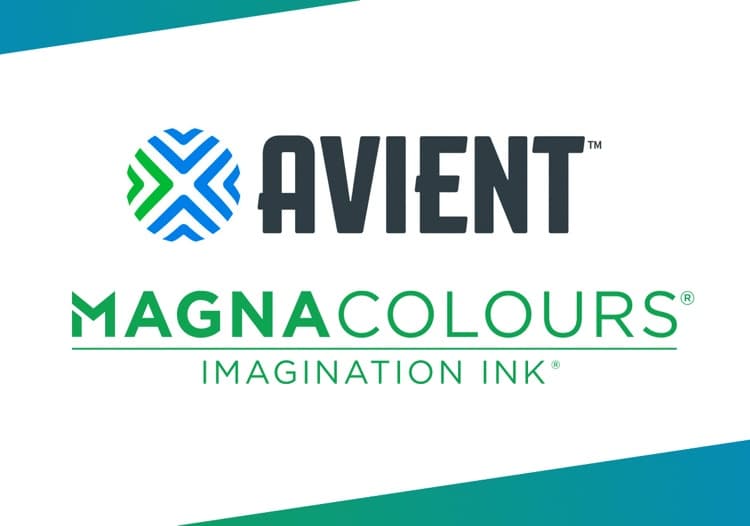
Polyethylene (PE) prices have declined in Brazil and production has slowed due to improved supply and full procurement of materials, while demand remains strong in most regional markets, ICIS reported.
In Mexico, the market is more tense due to factory problems faced by manufacturers and limited availability for imports from the United States. High naphtha prices remain under pressure from high crude oil prices and affect raw material prices in Brazil. Caprolactam Petrochemicals PlasticPollution
The July rise in PE prices in the US amounted to about 3-5 cents per pound (USD66-110 per ton). Insufficient supply of polymers in some markets and high demand may persist until 2022.
Earlier it was reported that Saudi Ethylene & Polyethylene Co (SEPC), a Saudi petrochemical company, resumed production on June 15-19 at two polyethylene (PE) plants in Jubail (Jubail, Saudi Arabia) after carrying out planned preventive measures. Maintenance at these enterprises, which can produce 450 thousand tons of high-density polyethylene (LDPE) and 400 thousand tons of low-density polyethylene (HDPE) per year, was started on May 23 of this year.
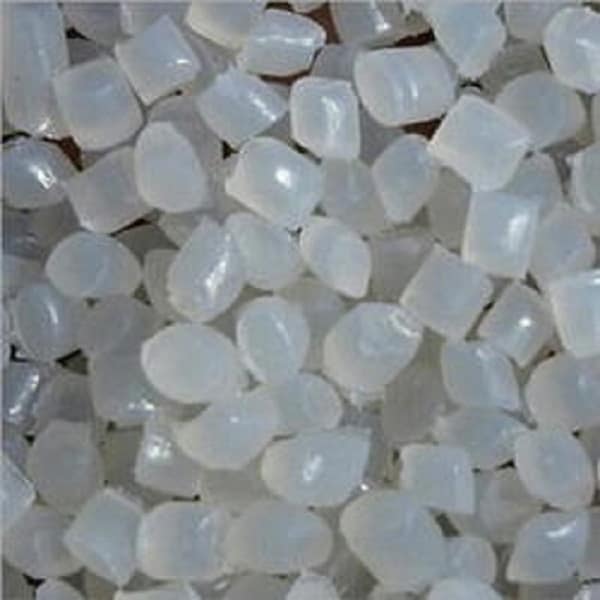
-Ethylene prices bolster higher in Asia
This week, ethylene prices leapt higher in Asia. The price rise was triggered by firmer upstream energy values and stronger regional demand trends.
Reports of tight product avails, owing to planned and unplanned cracker shutdowns further pushed prices higher.
On Friday, CFR North East Asia ethylene prices were assessed at the USD 970-975/mt levels, a surge of USD (+70/mt) from last week.
CFR South East Asia prices were assessed at the USD 915-920/mt levels, a steep week on week increase of USD (+50/mt). Caprolactam Petrochemicals PlasticPollution
In plant news, Lotte Chemical has shut its cracker partially on July 1, 2021 owing to technical glitch. Further details on the duration of the shutdown could not be ascertained. Located at Yeosu, South Korea, the cracker has an ethylene capacity of 1.2 million mt/year and propylene capacity of 665,000 mt/year.
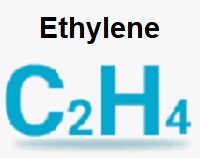
-Don’t believe the hype about ’advanced recycling’
Former EPA Regional Administrator says advanced recycling ‘will not solve our plastic pollution crisis or slow climate change’ Caprolactam Petrochemicals PlasticPollution
Plastic pollution is a threat to our planet and our health. Every year, at least 15 million tons of plastic waste enters our oceans. Plastic is also polluting our air, soil, drinking water, and food. Recent studies found that adults are consuming roughly a credit card’s worth of plastic every week and documented microplastics in the human placenta. Few are aware that plastic is also hastening the climate crisis at every step of its life cycle from extraction to production to usage to disposal. In fact, if plastic was a country, it would be the world’s fifth-largest emitter of greenhouse gases.
Yet rather than reducing plastic production — the only true solution to our plastic waste crisis — the Chemistry Council of New Jersey is pushing “advanced recycling,” a deeply flawed approach that would allow the industry to continue to expand the overproduction of plastics while paying lip service to solving the problem. The U.S. is already littered with expensive, high-profile advanced recycling failures. We do not need another one of these polluting and ineffectual facilities sited in New Jersey.
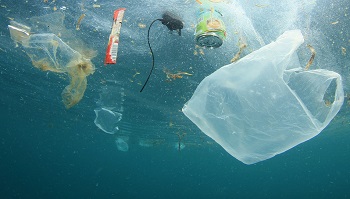
Picture this: After tossing a single-use plastic bottle into your curbside recycling bin, it gets picked up and trucked to a material recovery facility, or MRF (pronounced “murf”). Once there, it’s separated from the paper, glass, and metal and sorted into groups of similar plastics. Caprolactam Petrochemicals PlasticPollution
Your bottle – and countless others – are then packed into a rectangular bale, sold as a commodity, and sent to another facility to be sorted by color, shredded, sanitized, melted down, and molded into smaller, smoother bits of plastic called “nurdles.”
Finally, the rice-sized remains of your bottle are purchased again, melted again, and fashioned into another bottle, ready to be filled with a fruity or fizzy drink.
This example is the best-case scenario for plastic bottles, but unfortunately it is not the norm. Plastic recycling is cumbersome and expensive, and in many cases, new “virgin plastics” are cheaper than recycled plastics.
Less than 30% of plastic bottles are recycled in the U.S., but technically speaking, most are “downcycled.” Also known as cascaded recycling or open-loop recycling, downcycling occurs when a material is remade into an item of lower quality. These items typically can’t be recycled again, which cuts an item’s overall life cycle short.
While recycling closes the loop and keeps an item in circulation – just like the chasing arrows on the recycling symbol would suggest – downcycling turns that loop into a one-way arrow. From there, a material can only go downhill: After outliving its usefulness as a carpet or a bench, the next stop is the landfill or incinerator.
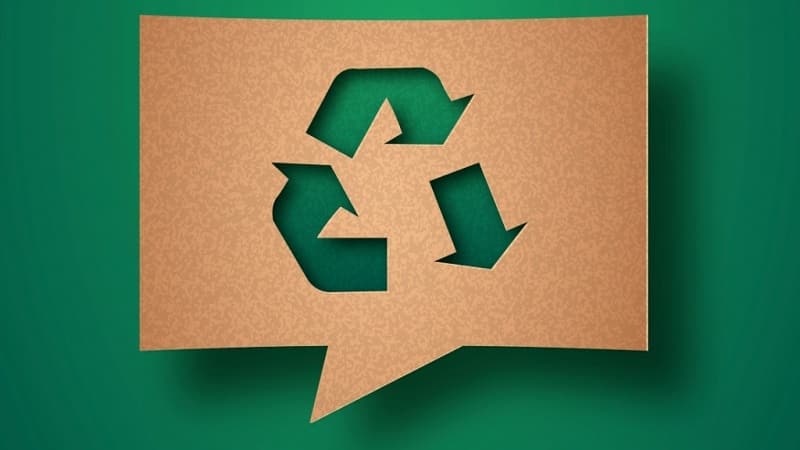
West Texas Intermediate crude oil prices jumped above $100 in 2008 and again in 2014. In May 2008, they briefly rose above $150. Circumstances are such that more and more analysts expect a spike in oil prices in the next several months. WTI crude currently trades at just above $75. In June of last year, that figure was only about $40. Caprolactam Petrochemicals PlasticPollution
CNBC recently reported: “Analysts at Bank of America are even more bullish. They argue Brent prices could see $100 in the summer of next year.”
Both OPEC and the IEA expect a rise in demand this year which probably means higher prices by the end of 2021.
Part of the reason for the price increase is that demand has picked up as the shuttering of the global economy due to COVID-19 has ended in many large countries. OPEC has resisted an increase in production, led most recently by the United Arab Emirates. Oil fracking in America was hurt by the drop in oil prices late last year. Some frackers went out of business, which has constrained supply even further.
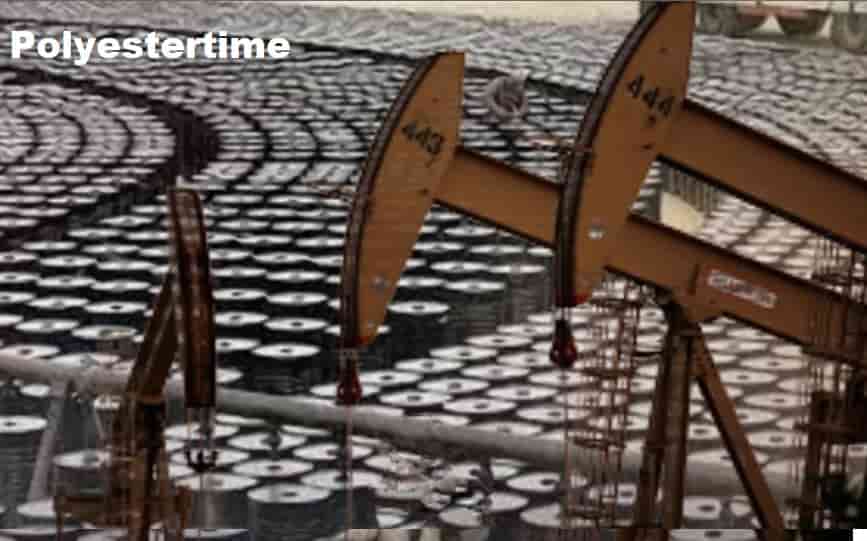
-Kandui launches thermochromic masterbatch
Kandui Industries has introduced a thermochromic masterbatch – an additive masterbatch that enables reversible colour changing properties.
These masterbatches have an activation temperature, which helps toggle the end product’s colour. This property is often utilised in the coding of fabrics, adding a security feature to the original branding. Caprolactam Petrochemicals PlasticPollution
Ashwin Agarwal, managing director, Kandui Industries, explained, “When a top textile customer asked our R&D team for a counterfeiting solution, after substantial deliberation, we came with the idea of producing the selvedge of the fabric in such a manner that on the application of heat (ironing), its colour would change. The original colour would reappear at room temperature.”
The company took about a year to create the masterbatch. It faced a twofold challenge in the product’s creation – tackling the heat sensitivity of pigments and achieving a smaller pigment particle size.
“As the thermochromic pigments available in the market are extremely heat-sensitive, the molecules get destroyed in the extrusion process. Hence, we thought of applying a heat-resistant coating on the pigments. This enables the preservation of the pigment properties up to a temperature of 260-degree Celcius. The pigment supplier helped us tackle the second challenge, making the particle size small enough to run in low denier applications,” said Agarwal.
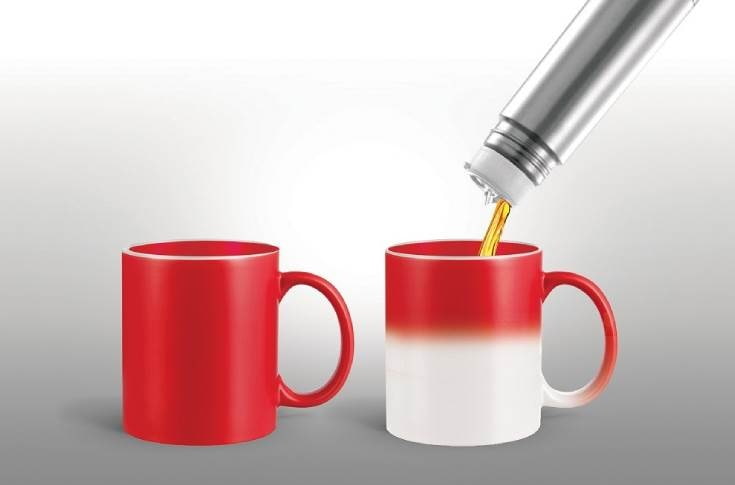
-Report deplores Africa’s reliance on fossil fuels and biomes
A new report published by the United Nations Economic Commission for Africa (ECA) has deplored the fact that Africa countries rely mainly on fossil fuels and biomes and haven’t diversified to renewable and non-renewable energy sources.
Currently, 600 million people in Africa do not have access to electricity and 900 million have no access to clean cooking fuel. Meanwhile, electricity access rates in 24 countries are below 50 per cent. Caprolactam Petrochemicals PlasticPollution
The report titled “Energy Prices in Africa: Transition Towards Clean Energy for Africa’s Industrialization,” deplores the fact that Africa relies mainly on fossil fuels and biomes instead of diversifying its primary energy supply, given its plethora of resources (renewable and non-renewable).
Speaking at the launch June 22, 2021, ECA Executive Secretary, Vera Songwe said, “There’s no way Africa can build forward better if we do not make adequate investments in energy and ensure affordable access for all.”. She therefore, urged countries to ensure that there’s cost reflective pricing in the energy sector.
The report cites countries like Liberia, Malawi, Central African Republic, Burundi, and South Sudan as having stagnated or reversed in electricity access, while countries like Nigeria, DRC and Ethiopia reportedly have the biggest electricity access deficits.
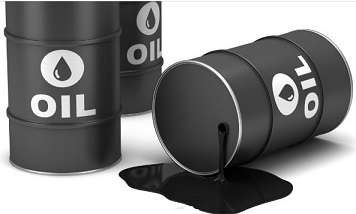
Caprolactam Petrochemicals PlasticPollution
